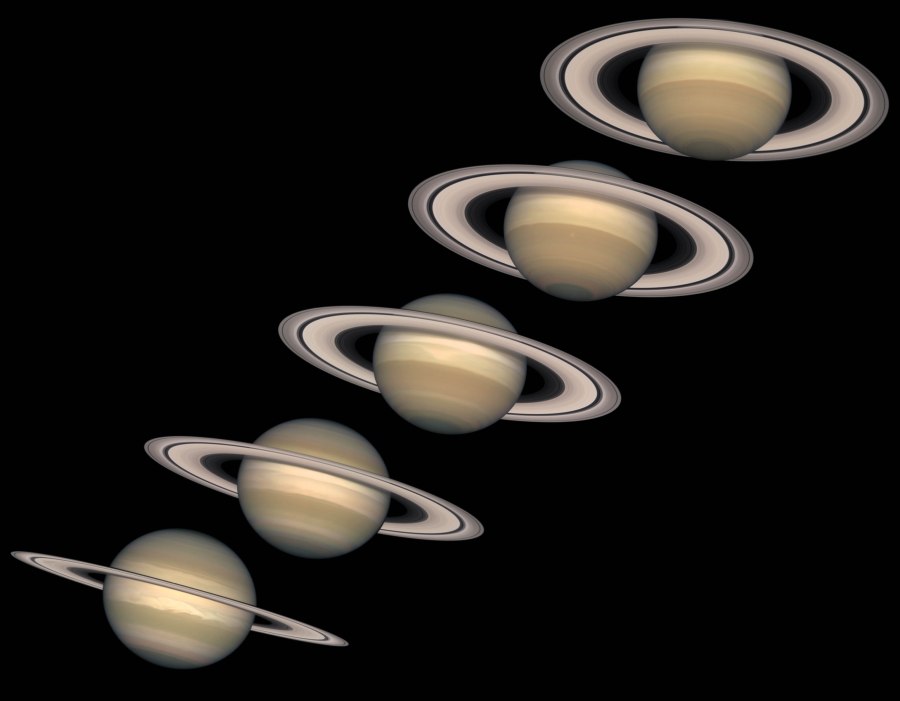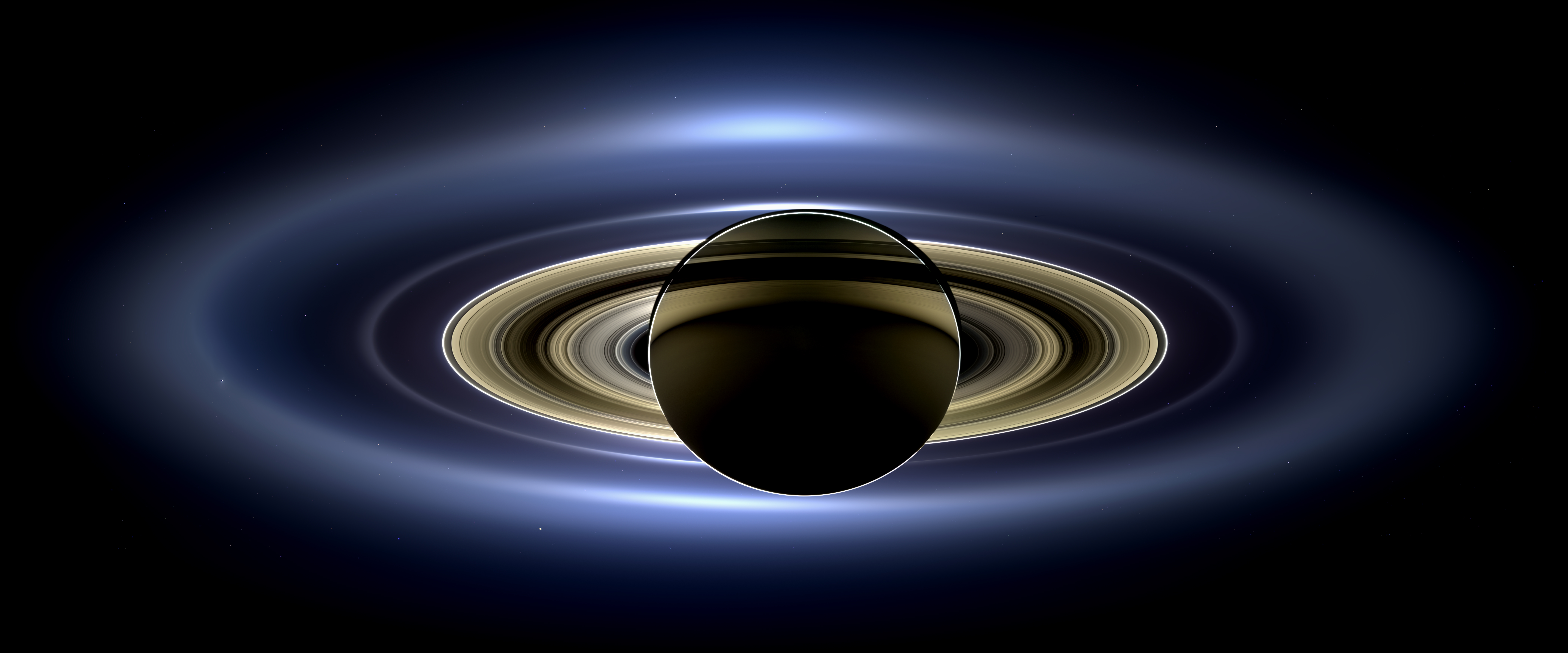Once every 29 years, Saturn makes a circuit of the night sky. That is quick compared to Neptune’s 165 year orbit, but Neptune isn’t visible to the naked eye. Being one of five “wandering stars” known to Greek astronomers, the slow moving object was called Cronus, named for the god of time. The god was father to Zeus and son of Ouranos, or as the Romans called them: Jupiter and Uranus. It moved slower than Jupiter in the night sky — nearly three times as slow — so it had to be further away than Jupiter. (Uranus, then, fit nicely after Saturn once discovered.)
An astronomer named Huygens looked at Saturn with the best telescope of his time and discovered the planet was encircled by a system of rings. The orbit Saturn’s equator and also share in the planet’s 27 degree inclination to the plane of orbit. Earth has an inclination of 23.5 degrees, so our change in face is less severe (from a vantage point other than Earth, of course). Looking at Saturn, its rings emphasize these changes. At the equinox, we see the rings edge-on, so they disappear. At the solstices, the rings are presented to us at their widest separation.

Different phases of Saturn’s rings, via NASA.gov
The face of Saturn is an ellipse roughly 108,000 km from north to south. The rings are not solid, but instead are a collection of ice crystals that form a disk between 10 and 1000 meters wide. They are most likely from a destroyed moon, roughly the size of ours. Many moonlets — either leftover pieces of this doomed moon or recombinations of ring material — orbit within the rings themselves, guiding the different boundaries and shepherding the rings into shape.

Daphnis orbiting within the Keeler Gap and making waves out of ring particles, via NASA.gov
Saturn has an extensive satellite system, including Titan, the only moon with an atmosphere. Titan was named after the Greek Titans, not its size, though it is now known to dwarf all other Saturnian moons. It also dwarfs the planet Mercury, but that is for another article.

Saturn and moons (L-R) Enceladus, Dione, Titan and Mimas, via AcclaimImages
The edge of Saturn’s visible rings extends to about twice its planetary radius. If Titan were as close as the furthest edge of the rings, the difference in gravity would put too much stress on the different hemispheres, tearing Titan apart. The bits will eventually smash into one another or break apart further and collect around the equator. Phobos, a satellite of Mars, will eventually pass too close to Mars’ Roche Limit and crumble into rings. Of course, this will be a very small ring system. Saturn’s main ring system extends 280,360 km side to side. These are the A and B rings, separated by the thin Cassini Division. Through a telescope, this is the view of Saturn you would see. However, past these dense rings are fainter rings made from bits of ejecta from Saturn’s moons. The E ring extends to a distance of nearly one million kilometers. Enceladus orbits within the ring and supplies the ring material via cryovolcanic eruptions. The E ring is then dwarfed by Saturn’s Phoebe ring, which is a very thin band of particles within the orbit of Phoebe, another moon. The Phoebe ring is at least 8 million kilometers across.

A backlit Saturn showing the inner extent of its ring system. Earth can be seen on the lower right, just inside the fuzzy E ring, via Wikimedia Commons
Saturn is a gas giant. This differs from Uranus and Neptune, which are ice giants. While all three are primarily hydrogen, Saturn lacks heavier elements, or ices, that “freeze” further from the Sun. In fact, Saturn is the most hydrogen-abundant object by volume in the solar system. The Sun and Jupiter are the most massive hydrogen-based objects, though they only are 73 and 90 percent hydrogen, respectively. Saturn is 96 percent hydrogen. It is, of course, not very dense. Less dense, in fact, than water on Earth. Saturn has one-third the mass of tightly packed Jupiter, though they are roughly the same size. Jupiter then has a density far higher than Saturn. Both planets rotate at similar speeds, but Saturn’s low density flattens its disk into a noticeable oval. Hydrogen is the lightest element and tends to stay a gas at lower temperatures and pressures. Under the immense pressure of Jupiter’s high density, it begins to behave as a liquid and swirls in differently colored bands across the upper atmosphere. The upper atmosphere of Saturn is similar in its bands and fluid motions, but its lower density lowers the contrasts. Looking at Saturn through a sufficient telescope reveals a pale and mostly featureless face. Once every orbit, a large storm forms and spreads along its northern hemisphere, though it quickly dissipates. It does, however, have a massive hexagonal storm raging at the northern pole. The shape is thought to come from the differences in wind speed throughout the upper atmosphere and persists due to a lack of geologic interference.

A top-down view of Saturn. The hexagonal storm is on the very top with wide cloud bands circling the planet. Via Wikimedia Commons
Further reading can be found in The Planet Saturn, QB 671-A4, located on the 7th floor in Alden Library.






